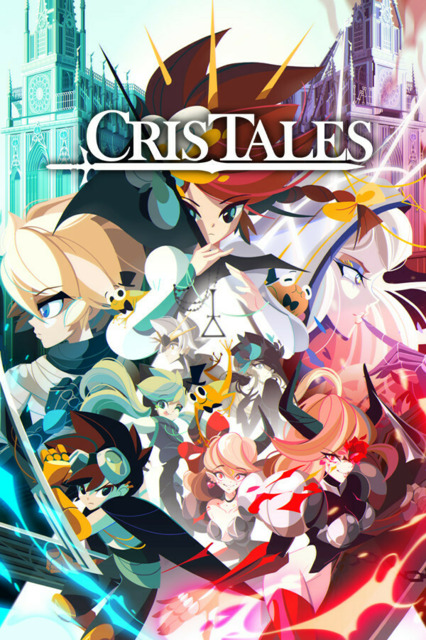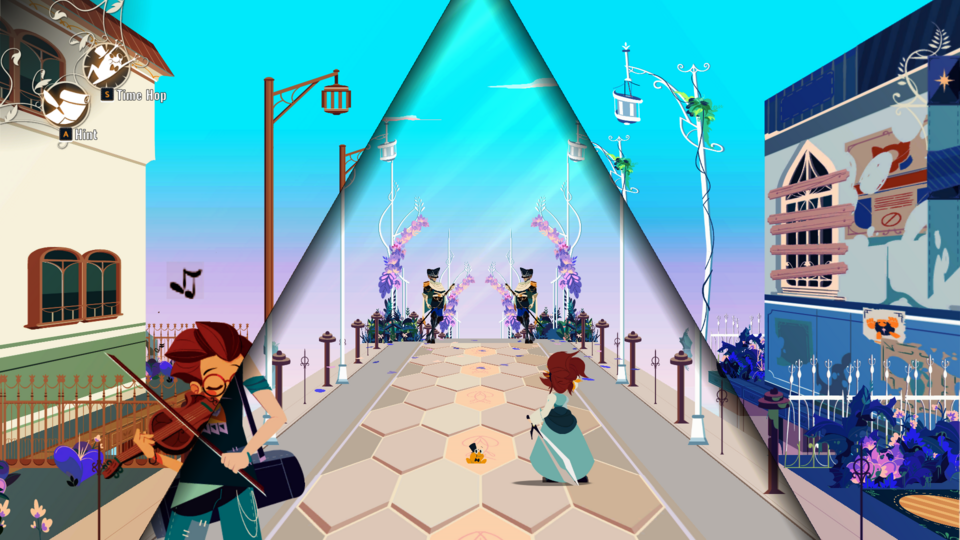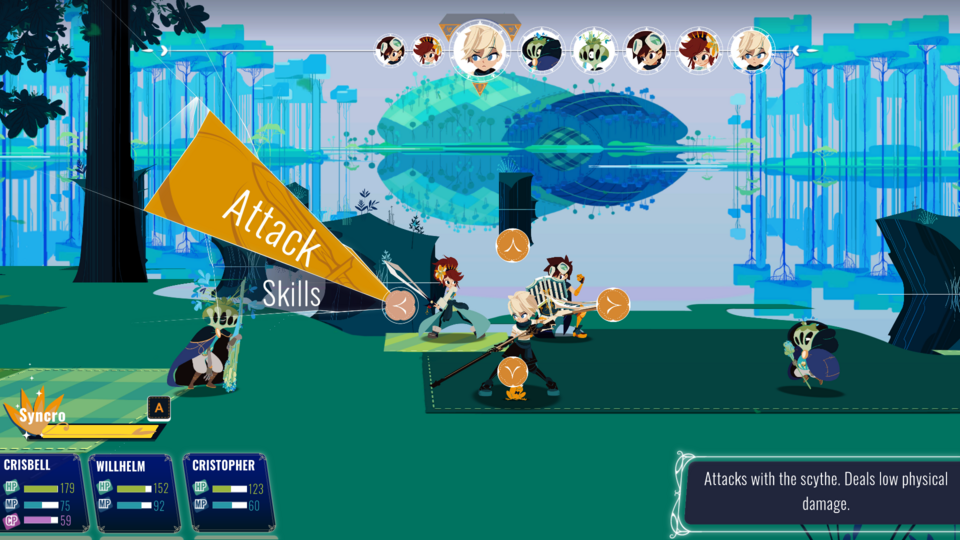Indie Game of the Week 334: Cris Tales
By Mento 0 Comments

Part of me thinks I've enough RPGs on my plate already without jamming them into my Indie Game of the Week slot (ew, phrasing) as well—and 2023 isn't exactly an "agile" year for new RPGs either, to use Electronic Arts's parlance—but I'll admit to long being curious about Cris Tales since its head-turning trailers first hit E3 and the like, and then possibly more so still once I'd heard that it had a few odd issues with its central time-manipulation gimmick. Created by Colombian gaming studios Dreams Uncorporated and Syck, Cris Tales sees two characters called Cris—trainee "Time Mage" Crisbell and vengeful warrior Cristopher—unite with some colorful allies to save their world from the machinations of the Time Empress, an era-hopping tyrant looking to rule the future by controlling the past. (Honestly, if you're aiming to make a decent throwback RPG, borrowing the antagonist archetype from Final Fantasy VIII wouldn't hurt.)
Fundamentally, Cris Tales is a standard 2D turn-based RPG of the kind that were everywhere on SNES and PS1: you and your enemies take turns in an order based on various factors like stats and status effects, dishing damage back and forth, while potentially setting up traps and debuffs that could help determine the flow of battle. The game's central time manipulation gimmick is naturally a factor here as well: Crisbell has the unique ability to change parts of the battlefield to their past and future states, along with any enemies occupying those sides of the screen (left for past, right for future). For instance, a wolf could be made easier to cope with by dropping it in the past, turning it into a pup (though thankfully not one that's too cute to kill); dropping it in the future will instead transform it into a fearsome elder wolf, however. Different enemies will have stronger or weaker states depending on whether you've aged them up or down, and it might even change their resistances and attack patterns. Elder goblins, for instance, have less health but will rely on spells instead of physical attacks. It's a complex and intriguing system, though one that's rarely had that much impact to justify the inconvenience of burning your main character's turn (and some of their time mage juice) just to see the variations, not to mention that said variations will need to be scanned again by your DPS mage companion Willhelm to identify any new weaknesses. That said, elemental magic is considerably more powerful than regular attacks, so if you can identify a strong element to use against foes it's usually a good idea to use it; it certainly makes battles go faster.

The time manipulation also plays a role outside of combat as well. Though dungeons are immune, cities and other settlements can be explored both in the past and future to some extent, revealing chests that only exist in one time period and helping to solve side-quests and mysteries involving the townfolk. Most every NPC you can meet will have both a past and future form (unless they're a child or an elderly person, the absence of the latter in the future mode often coming off as a bit grim) which is not only a great little bit of detail but gives you a glimpse into their personalities and the possibly miserable future that awaits them without your party's intervention in the present. I suspect this aspect of the game, both in and out of combat, will continue to see new developments as I make further progress in the game.
The game's presentation is spectacular, but can be a little visually busy at times. The flamboyant and saturated art style is something I don't see too often in games, and when I do they tend to be for stylish artsy platformers like Gris, though in contrast the animations tend to be a bit stiff and paper-doll-like. The way the game makes use of color palettes when representing the past, present, and future is masterful too: the past always has a sort of warm golden sheen like the sun has only just risen on the world, while the future always takes on oppressive dark blues and grays as it highlights the foreboding reality that could result after the Time Empress's plans come to fruition. Though the dungeons and cities have some slightly awkward designs due to the action being on 2D horizontal planes—it's not unlike the Paper Mario games in that sense, and I now realize that was probably intentional given the amount of love those first two games saw—they've all been very picturesque and will frequently use its obtuse perspective to hide chests and other secrets in the foreground or behind walls. The random encounter rate can be unfortunately on the high side in some areas, and the fact that the game has random encounters at all might be a dealbreaker depending on how much you've come to appreciate modern RPG throwbacks finding ways to ameliorate the annoyance of that older model of unwelcome surprises; most will, at the very least, drop enemies on the map so you have time to prepare beforehand (should also be noted that Cris Tales has a similar old-school mentality when it comes to healing you back to full after every battle, which is to say that it won't; at least you'll get a few cheap healing skills pretty quickly).

Cris Tales has been fine if not exceptional so far, but I'm struggling to see where folks could've taken any serious issue with it. Maybe this critical failing make itself apparent the more progress I make, though it's usually the case that those dissatisfied with a typically lengthy RPG will bounce early if it isn't striking their fancy. The random encounters are a little disappointing but combat moves quickly enough once you've identified the weaknesses of local monsters and new skills acquired after levelling up will often bring about considerable change to your tactics and options: Cristopher has been acquiring more elemental spells to better increase his coverage, Crisbell now has both a haste buff and a slow debuff (though the latter doesn't seem to work on bosses) for turning the screws once a good strategy has been found, and Willhelm's become a capable support whom I rely on for their heals and scans. Combat in general has also been made a little bit more palatable with that old Mario RPG standby of timed hits: tapping the confirm button just before taking or giving damage will adjust the values in your favor, and with perfect timing you can escape most incoming status effects and serious harm. (At this point it's becoming rarer to find an Indie RPG that doesn't have that feature.) Some aspects of Cris Tales feel rudimentary, like it's a throwback RPG that's perhaps a little too beholden to the relatively unsophisticated era of '90s JRPGs, but its distinctive and joyfully colorful presentation and the promise of cleverer time manipulation mechanics has me intrigued enough to see it through. For the time being, at least, but then time does make fools of us all (though usually it just makes us really old).
Rating: 3 out of 5.
Post-Playthrough Edit: Well, after copious glitches including some game-crashing ones, EGS achievements refusing to pop, a second half of the game that makes little sense narratively due to time paradoxes and little sense mechanically as you whiz around fighting bosses and moving through dungeons you've already seen, and a pair of final bosses (a "fake" one and a real one) with some brutally cheap tactics my patience for this game finally wore out. I reached an ending of sorts and was glad to see the back of it. Even though it's been years since its release it's still in a pretty sorry state, or at least the second half which I guess the devs assume most people will never see: that it doesn't level up your inactive characters on top of the random encounter rate suggests that these guys haven't played an RPG since 1995. I've dropped the final score to 3 out of 5: there's some promising stuff here, and it really is pretty, but it lost any built-up goodwill pretty rapidly beyond a certain point.
| < Back to 333: Kaze and the Wild Masks | 001-100 | 101-200 | 201-300 | > Forward to 335: Splasher |
